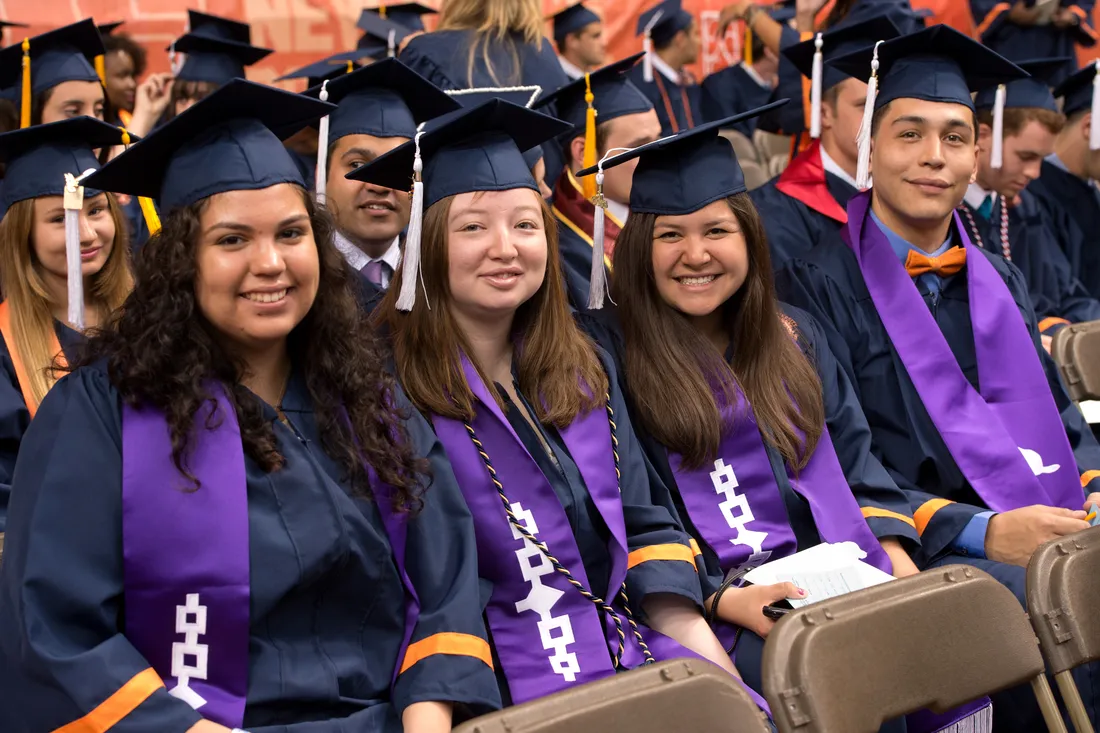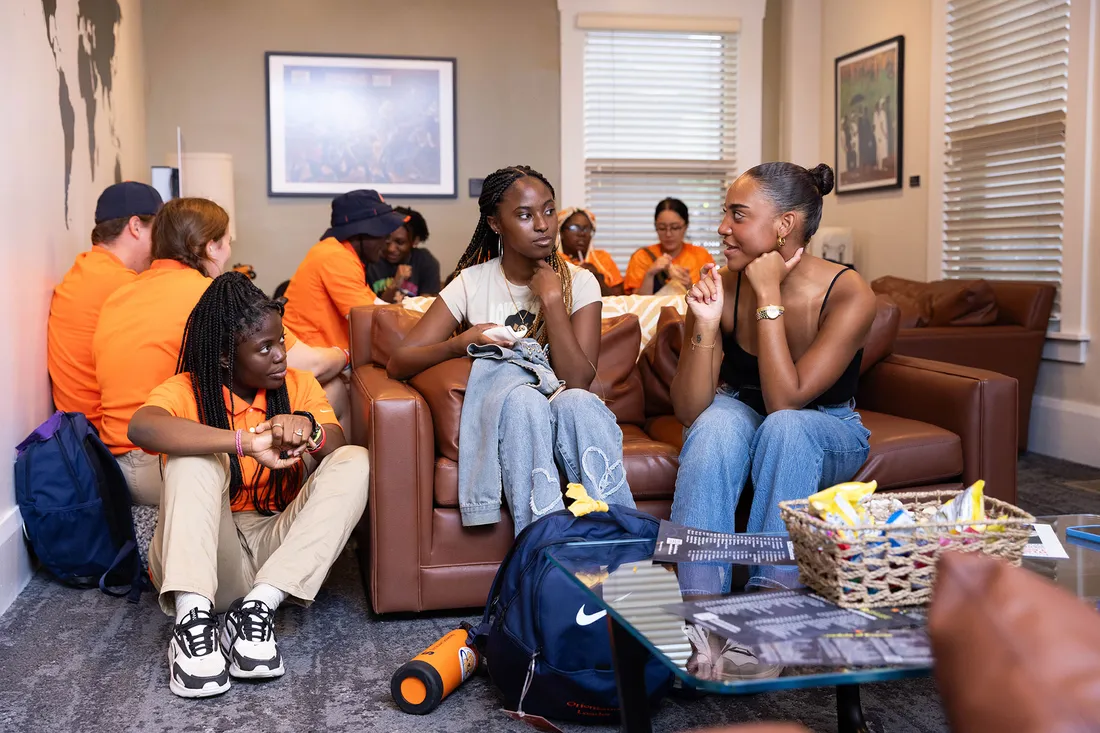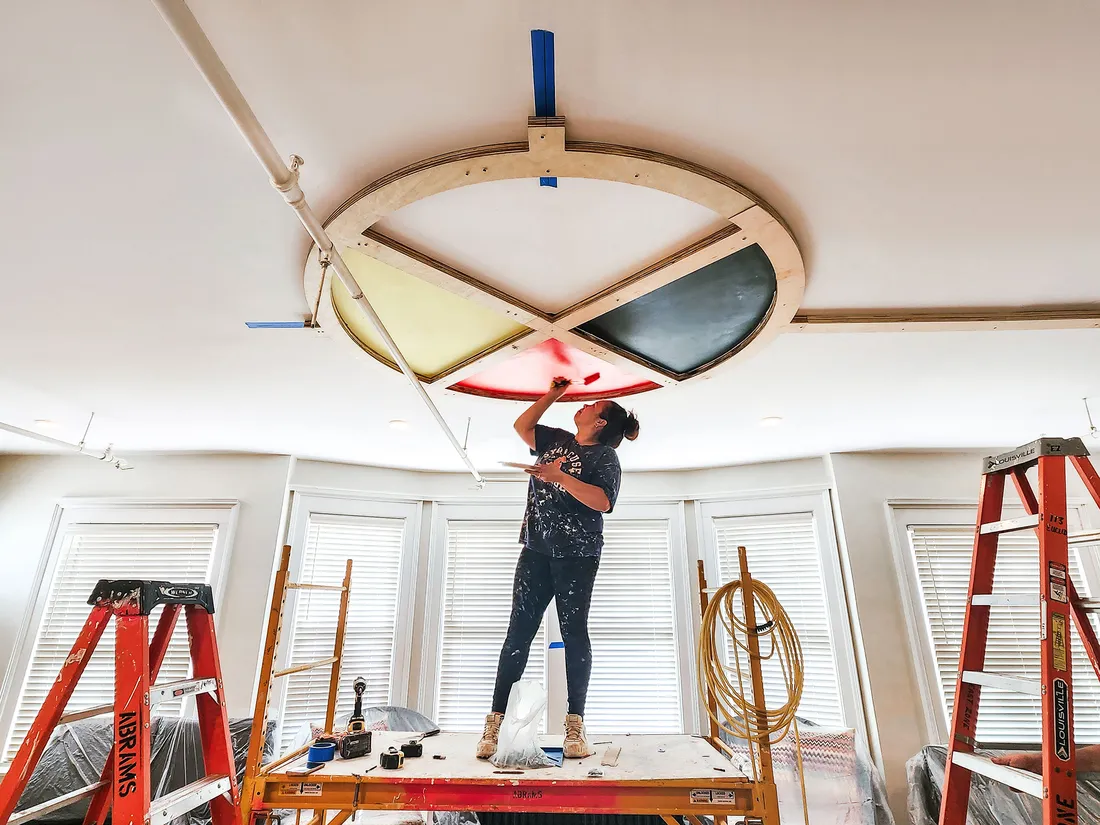
113 Euclid Avenue, home of the Native Student Program on campus, was renovated this summer and has reopened with more space for gatherings and programming.
The six nations of the Haudenosaunee* share an understanding of how the Earth began. In the sky world, a hole opened at the roots of the celestial tree, and Sky Woman tumbled through. Her fall was broken by birds, who cradled her on their wings and placed her gently on the back of a turtle. There, in mud raised from the deep by a muskrat, the seeds that Sky Woman brought from the sky world took root and the Earth began to flourish.
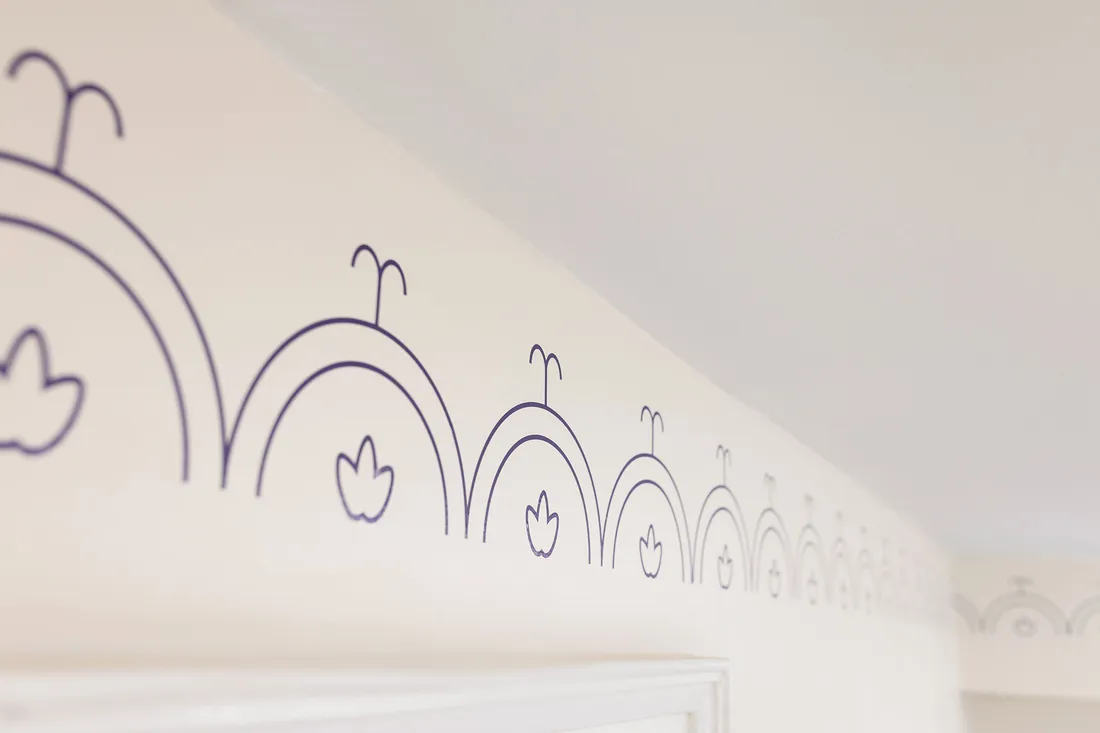
Richard Summers III ’25 majors in communications design and created a graphic representation of the Haudenosaunee origin story for one of 113 Euclid’s meeting rooms.
Richard Summers III ’25, Oneida, designed a graphic representation of this story to circle the ceiling of a meeting room at 113 Euclid Avenue, the newly renovated home of Syracuse University’s Native Student Program. The origin story speaks to the interconnections and collaborations that create and sustain our worlds. It’s a fitting message to celebrate the Native Student Program and the space dedicated to it—both represent years of collaborative efforts in support of current and future generations of students.
A Feeling of Home and Place of Belonging
For Summers, who majors in communications design in the College of Visual and Performing Arts, the story also speaks of familiarity and home. “I grew up hearing this story—hearing it from elders. It’s a story that brings that warm feeling, like everything is going to be OK,” he says.
That quality, too, makes it a perfect fit in 113 Euclid. Providing a homey atmosphere that nurtures a sense of belonging is one of the main goals of the space, explains Rhiannon Abrams ’21 G’24**, Potawatomi and Mohawk, and academic advisor for the Native Student Program. “Having a space where our experiences are centered and where we can form community is important for many Indigenous students’ success,” she says. “This dedicated space really sends a message that we have a presence on campus.”
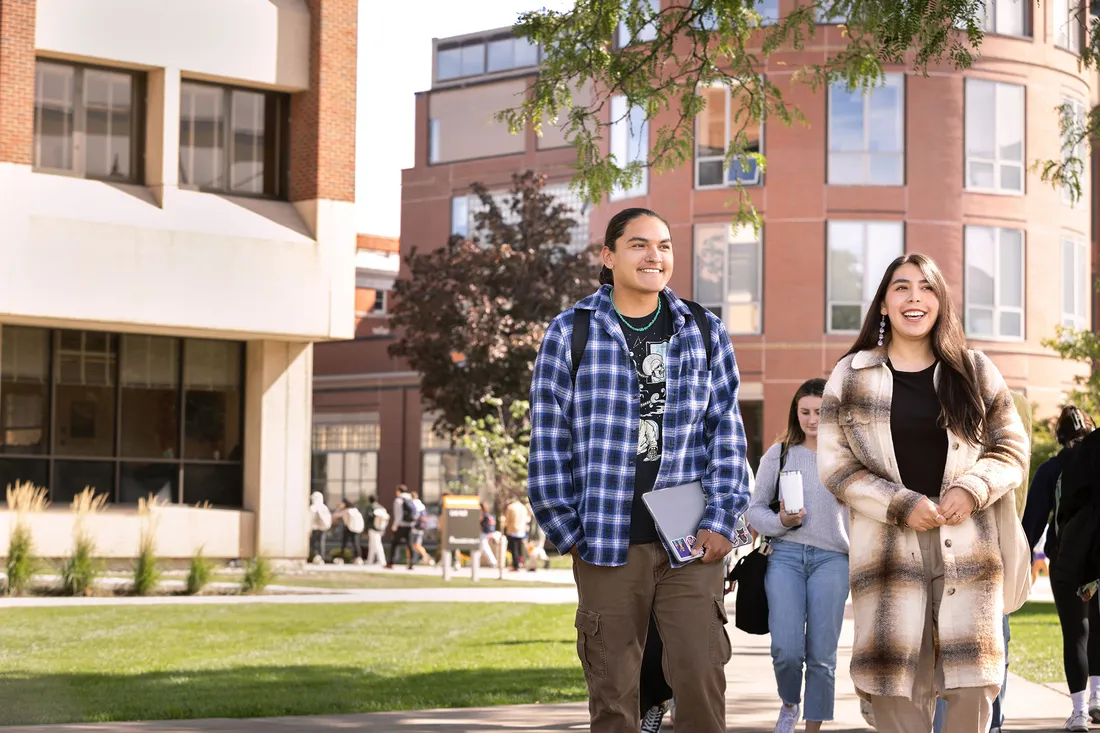
Summers (left) contributed on a student advisory committee planning 113 Euclid’s renovations, and Rhiannon Abrams ’21 G’24 (right), who serves as academic advisor for the Native Student Program, assisted this summer with some of the construction.
Over the summer, an Indigenous-owned contracting company conducted major renovations at 113 Euclid: Walls came down and rooms opened to allow for more light and larger gatherings. “We want 113 Euclid to feel like a safe and welcoming place for all,” says Summers, who served on a student committee contributing to renovation plans. “It’s a place you can go any time of the day to relax, see friends, do your work—and maybe get a little break from feeling like the only Native person in the room.”
Growing, Expanding and Welcoming to All
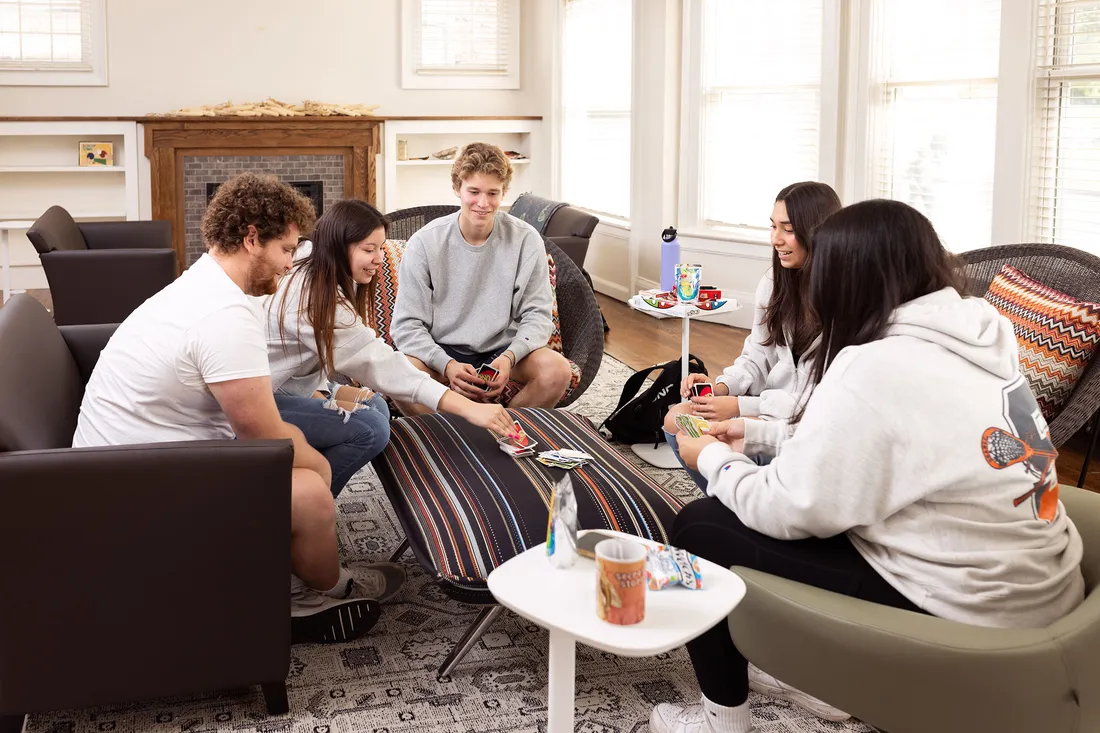
The newly renovated space is homey and welcoming, and students drop by between their other obligations to study, relax and connect with friends.
Renovations also mean the program can grow, says Bailey Tlachac G’23, Oneida, and Native Student Program coordinator in the Office of Multicultural Affairs. At 113 Euclid, there is space dedicated for students to create regalia and also opportunities to practice Native languages. “Language revitalization is really important to tribal communities. If we don’t have our language, we don’t have our culture,” she explains. “Now we have space for a language room, which we’ll be able to fill with materials so that interested students can work on learning a language or maintaining what they already know.”
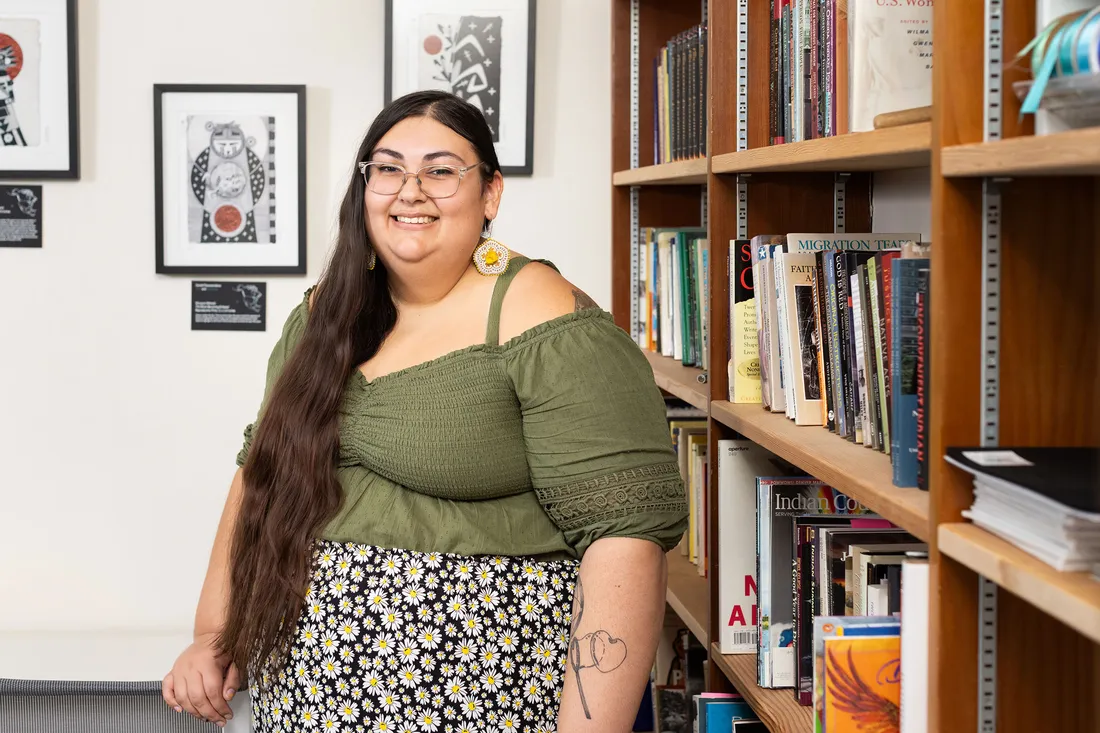
The renovated space will support programming such as Native language study, says Native Student Program coordinator, Bailey Tlachac G’23.
Tlachac is also looking forward to expanding Indigenous programming to include more global representation. The Center for Global Indigenous Cultures and Environmental Justice, an academic unit that supports interdisciplinary work alongside Indigenous communities to address issues related to cultural heritage, political sovereignty and climate change, will also be based at 113 Euclid. “I am really excited that this space will help us expand our global representation,” says Tlachac. “This is home for all Indigenous experiences, and it will help us grow Indigenous representation across campus.”
Seven Generations Thinking
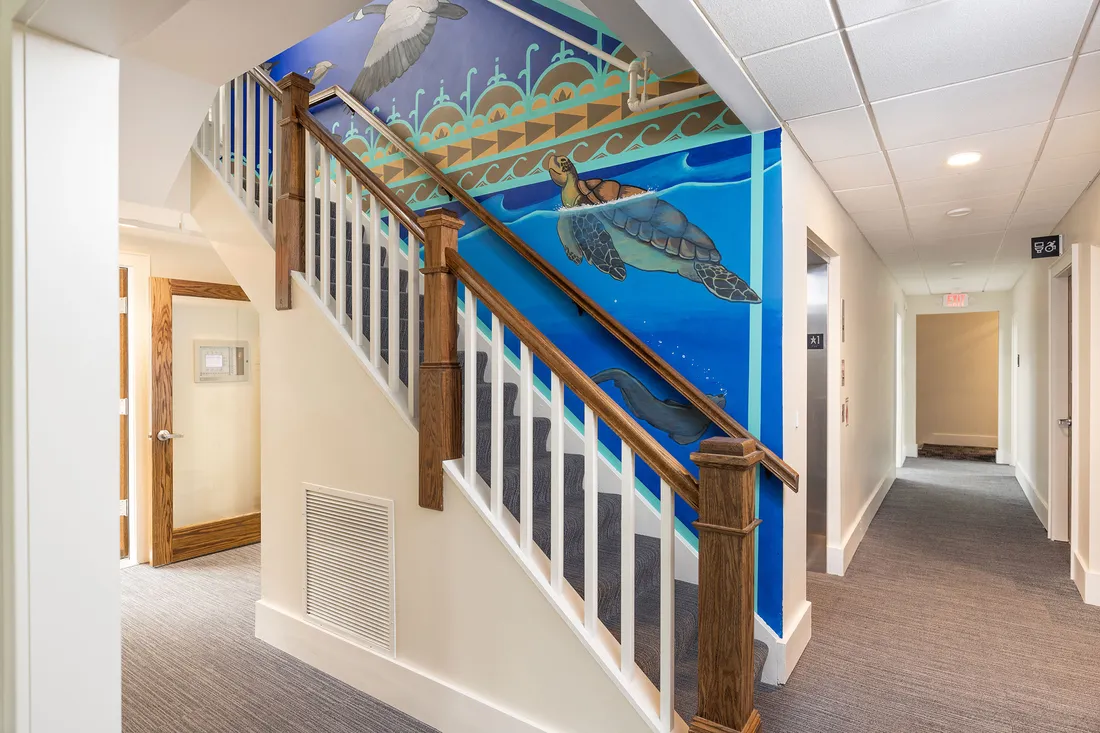
Pieces by Indigenous artists from around the world fill the walls at 113 Euclid, including a mural by Onondaga artist Brandon Lazore.
The walls at 113 Euclid are filling with pieces by Indigenous artists from around the world. One of the criteria that has guided art selection is a focus on Indigenous presence in modern and future contexts, says Tlachac. Conscientiousness about the future is salient at 113 Euclid in other ways, too. Abrams and Tlachac speak with great gratitude of Regina A. Jones ’07, Oneida, founding director of the Native Student Program. Although Jones retired last year, Abrams and Tlachac credit her support and mentorship of Native students for growing the program to its current form, and they see their efforts as continuing her legacy of working to benefit future generations. “A lot of what you might advocate for or work toward as a student, you might not be in place to see come to fruition,” says Abrams. “But you do it because you know it’s the right thing for the people who come after you.”
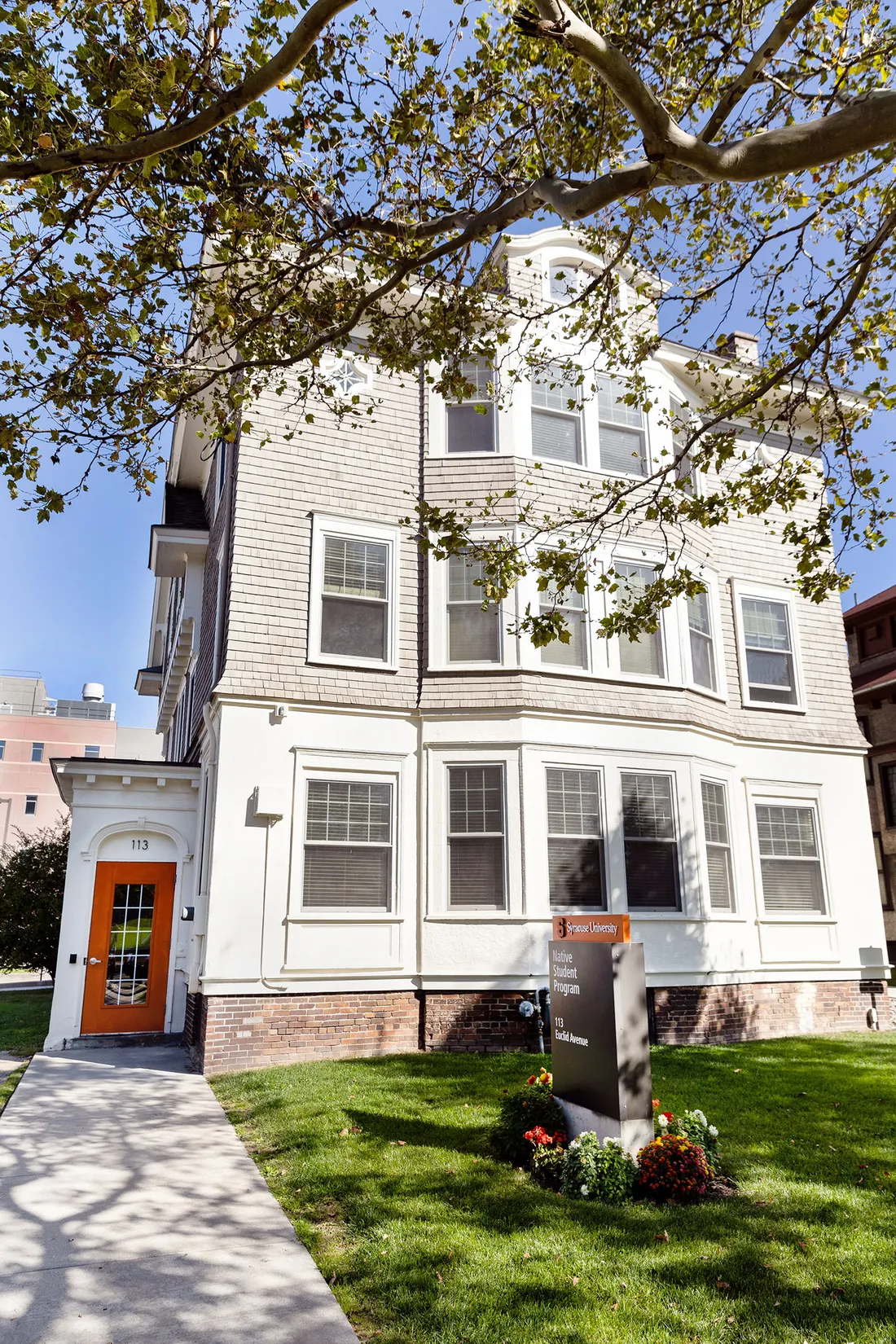
In addition to the Native Student Program, 113 Euclid will also be home to the Center for Global Indigenous Cultures and Environmental Justice.
“We have this saying—'for seven generations’,” explains Summers. “It means that what you do now should make things better for people seven generations from now. That’s what we’re trying to do here, with 113 Euclid.”
*The Haudenosaunee Confederacy include the Mohawk, Oneida, Onondaga, Cayuga, Seneca and Tuscarora nations, and Haudenosaunee ancestral lands extend across most what is now known as Upstate New York.
** Rhiannon Abrams got her bachelor’s degree in health and exercise science at the Falk College of Sport and Human Dynamics, and is now pursuing a master’s degree in business analytics at Whitman School of Management.

